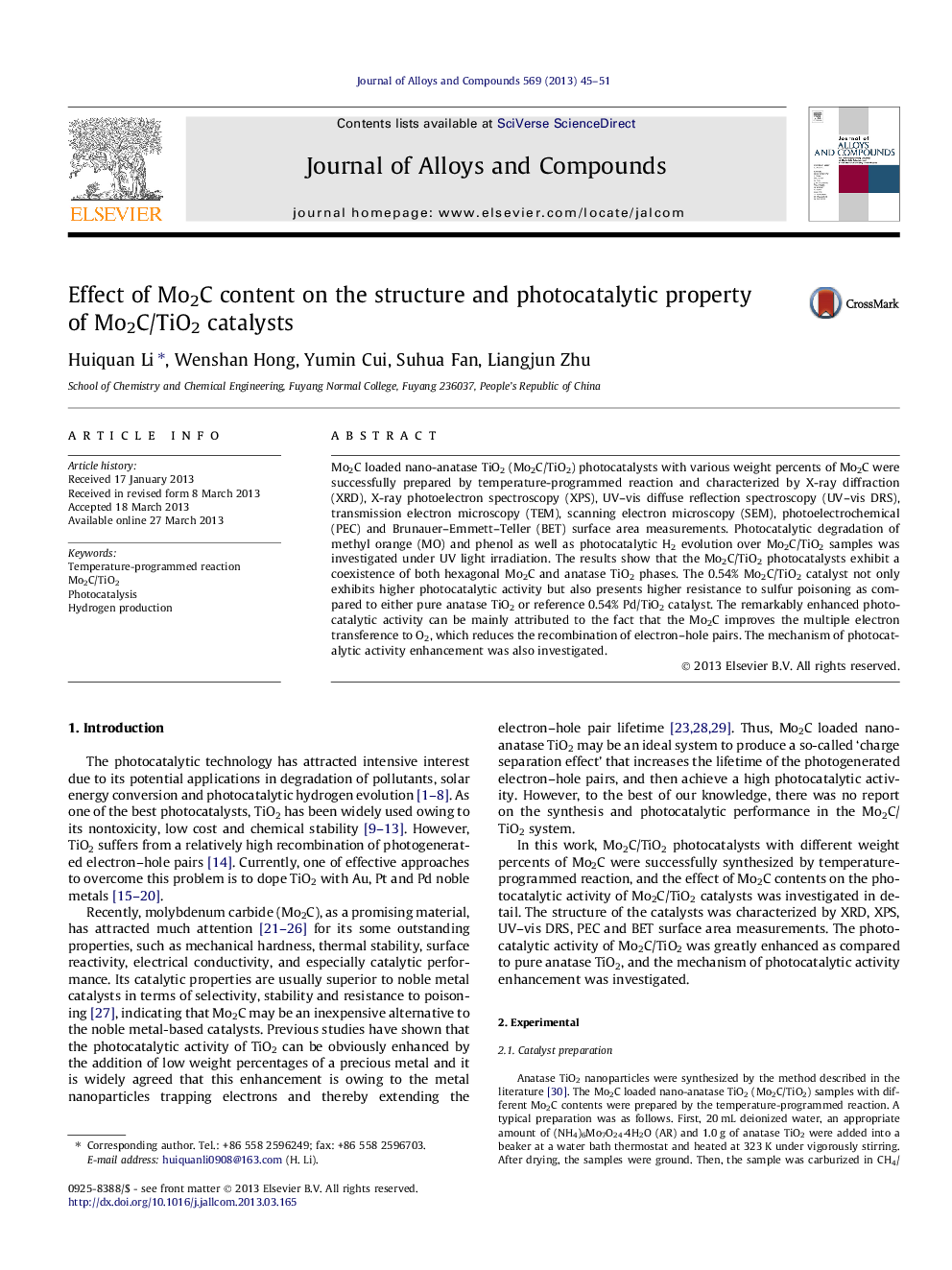| کد مقاله | کد نشریه | سال انتشار | مقاله انگلیسی | نسخه تمام متن |
|---|---|---|---|---|
| 1614026 | 1516324 | 2013 | 7 صفحه PDF | دانلود رایگان |

• Proper Mo2C loaded nano-anatase significantly enhanced its photocatalytic activity.
• 0.54% Mo2C/TiO2 presents higher resistance to sulfur poisoning than 0.54% Pd/TiO2.
• Proper Mo2C loaded nano-anatase improved the multiple electron transference to O2.
• The mechanism of photocatalytic activity enhancement was investigated.
Mo2C loaded nano-anatase TiO2 (Mo2C/TiO2) photocatalysts with various weight percents of Mo2C were successfully prepared by temperature-programmed reaction and characterized by X-ray diffraction (XRD), X-ray photoelectron spectroscopy (XPS), UV–vis diffuse reflection spectroscopy (UV–vis DRS), transmission electron microscopy (TEM), scanning electron microscopy (SEM), photoelectrochemical (PEC) and Brunauer–Emmett–Teller (BET) surface area measurements. Photocatalytic degradation of methyl orange (MO) and phenol as well as photocatalytic H2 evolution over Mo2C/TiO2 samples was investigated under UV light irradiation. The results show that the Mo2C/TiO2 photocatalysts exhibit a coexistence of both hexagonal Mo2C and anatase TiO2 phases. The 0.54% Mo2C/TiO2 catalyst not only exhibits higher photocatalytic activity but also presents higher resistance to sulfur poisoning as compared to either pure anatase TiO2 or reference 0.54% Pd/TiO2 catalyst. The remarkably enhanced photocatalytic activity can be mainly attributed to the fact that the Mo2C improves the multiple electron transference to O2, which reduces the recombination of electron–hole pairs. The mechanism of photocatalytic activity enhancement was also investigated.
The photoelectrons were generated from TiO2 and transferred across the interface between TiO2 and Mo2C to the surface of Mo2C, leaving the photogenerated holes in the valence band of TiO2. In this way, the photoinduced electron–hole pairs were effectively separated.Figure optionsDownload as PowerPoint slide
Journal: Journal of Alloys and Compounds - Volume 569, 25 August 2013, Pages 45–51